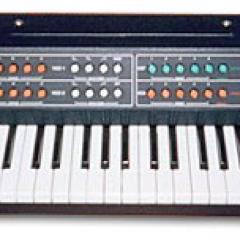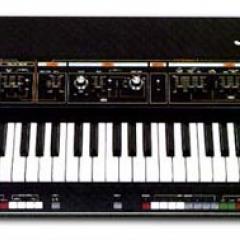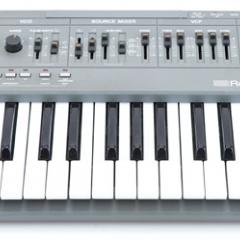Roland ProMars MRS-2

The ProMars Compuphonic was unique largely in part due to its introduction of microprocessor control, hence the term, "Compuphonic." It used an Intel 8048 processor to control the all-analog VCOs, VCAs, and VCFs. This also allowed it to store patches, making it one of the early few analog synthesizers that had patch memory.
The ProMars CompuPhonic has 10 preset sounds and 10 user programmable patches. The preset sounds include Bass, String, Clavi, Piano, Voice, Trombone, Sax, Trumpet, Synth I and Synth II. A very standard and well laid out set of knobs, sliders and edit controls give you the power to create some really cool sounds.
Designed as a partner to the polyphonic Jupiter-4, the ProMars is often considered a monophonic version of the Jupiter 4. However, whereas the Jupiter 4 had only one oscillator per voice, the ProMars features two oscillators (that can be de-tuned). Also found onboard are a nice VCF (filter) with its own ADSR, a typical VCA envelope section, a nice LFO and a pitch/mod wheel that can effect the LFO, VCF or VCA. It even has a noise generator. Nice wood end caps add to its vintage appeal as well. It has been used by Vangelis, Spandau Ballet, Add N To (X), Jethro Tull, and Depeche Mode.
Demos & Media

Specifications
Websites of Interest
Resources
Images from ANALOG, U.S., INC..



